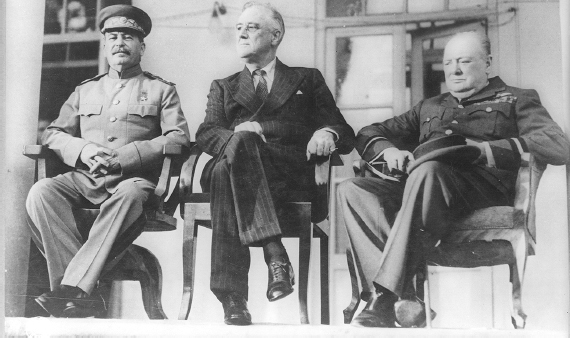Franklin Delano RooseveltPresidency |
Who were Roosevelt’s U.S. Supreme Court appointees? |
FDR appointed nine men to the U.S. Supreme Court, elevating Harlan Fiske Stone from the position of associate justice to chief justice, and then appointing eight associate justices. They were Hugo Black, Stanley Reed, Felix Frankfurter, William O. Douglas, Frank Murphy, James Byrnes, Robert Jackson, and Wiley Rutledge.
Stone had served as an associate justice from 1925 to 1941. Roosevelt elevated him to chief justice in 1941, where he served for five years. He was an effective chief justice who contributed greatly to the development of constitutional law in his tenure on the Court. The appointment was different than most because FDR, a Democrat, appointed Stone, who was a Republican. Usually, a president will appoint a justice from his political party.
Black, a former U.S. senator from Alabama, served on the Court for nearly thirty-four years, from 1937 until 1971. Though he had been a member of the Ku Klux Klan early in his career, he developed into a strong defender of individual freedoms on the Court. He was known for his strident defense of First Amendment freedoms until the waning years of his tenure.
Reed served on the Court for nineteen years from 1938 to 1957. A former solicitor general, Reed left the Court at age seventy-three. He lived until he was ninety-five, making him the longest living Supreme Court justice in American history. Felix Frankfurter, a noted Harvard law professor, served on the Court from 1939 until his death in 1962. Formerly with the American Civil Liberties Union, Frankfurter surprised some by turning into the defender of the doctrine of judicial restraint.
Douglas, the former chairman of the Securities and Exchange Commission, served on the Court for more than thirty-six years from 1939 until 1975. He served more years on the Court than any other justice in history. He was the Court’s ultimate defender of individual liberties. Murphy, the former mayor of Detroit and U.S. solicitor general, served on the Court nearly ten years from 1940 to 1949. He, too, consistently voted with Black and Douglas on civil liberties questions.
Byrnes served on the Court for little more than a year between 1941 and 1942. He left the Court to become the director of Economic Stabilization. He later served as secretary of state for President Harry Truman and governor of South Carolina.
Robert H. Jackson, formerly Roosevelt’s U.S. attorney general, served on the Court from 1941 to 1954. He is known for serving as the chief prosecutor at the Nuremberg Trials of Nazi war criminals in the mid-1940s. He is considered one of the Court’s best writers. Wiley Rutledge, a former law school dean, served on the Court from 1943 to 1949. He was a consistent liberal vote on the Court and a defender of religious freedom principles.

President Roosevelt meets with Soviet Union leader Joseph Stalin (left) and British Prime Minister Winston Churchill.
